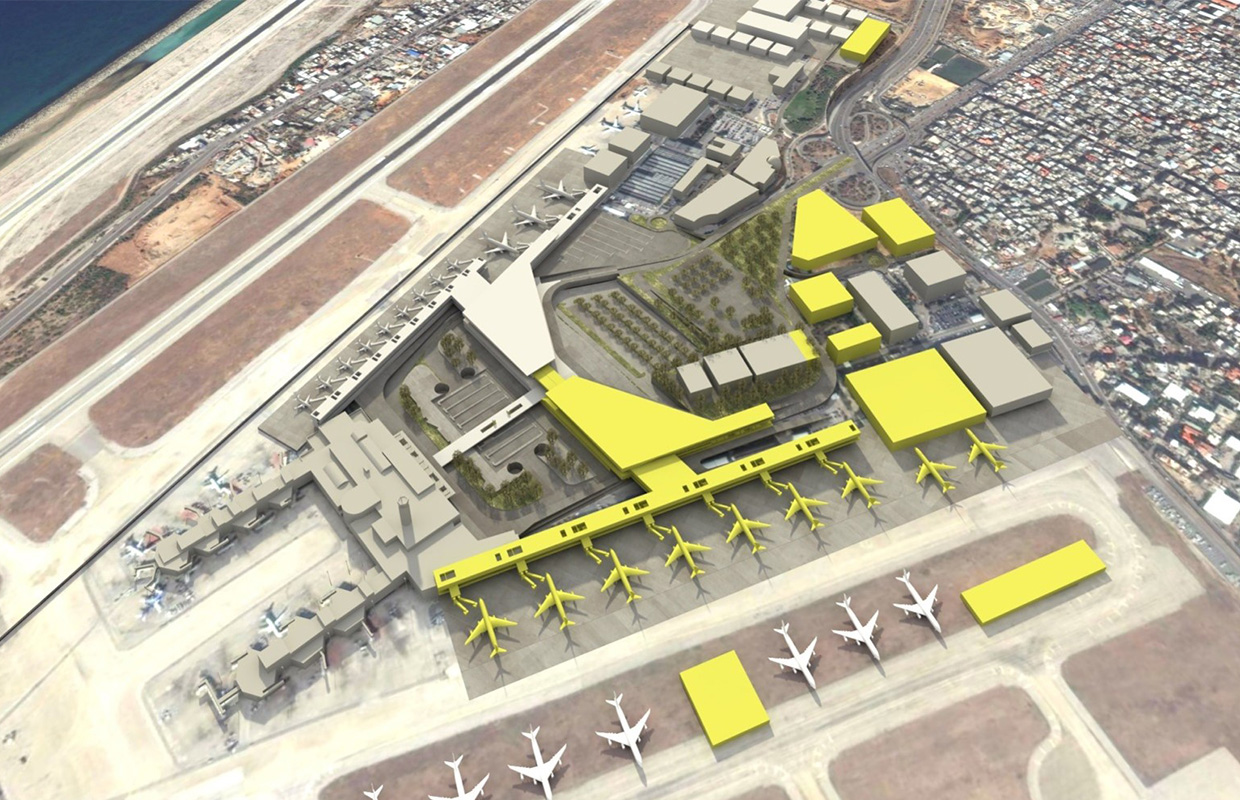News
Lebanon Preparing To Build New $70 Million Airport Terminal
The construction of the second terminal is hoped to increase the capacity of the airport from 8 million passengers a year today to 20 million by 2030.

Lebanon’s only international airport in Beirut is moving one step closer to the construction of its second terminal. According to Minister of Public Works and Transport Ali Hamie, the crisis-stricken country will soon launch an international tender for the $70 million project.
Once constructed, the state-of-the-art terminal will be used for chartered and low-cost flights, as well those carrying Muslim pilgrims to Saudi Arabia and Iraq. The construction of the new terminal, together with other expansions and technological improvements, is hoped to increase the capacity of the airport from 8 million passengers a year today to 20 million by 2030, as stated on the website of national carrier Middle East Airlines.

In the coming months, large numbers of travelers are expected to visit Lebanon and generate substantial revenue for the country, whose tourism sector alone corresponds to 7.5 percent of its gross domestic product.
“Occupancy rates are full at airlines and hotels,” Minister of Tourism Walid Nassar said in reference to the summer season. “Lebanese expatriates and foreigners who love Lebanon will come to Lebanon and it will be a promising summer.”
Also Read: Google Contributed Billions To The Middle East Economy In 2021
The capacity to comfortably welcome more travelers to the country would provide a nice economic boost for Lebanon, which is experiencing the first financial crisis in its modern history. What’s more, the terminal construction project, which will be carried out by the private sector, should create hundreds of new jobs.
The last time when the Beirut Airport underwent a modernization was in 1990, after the Lebanese Civil War, which left it in shambles and in need for major improvements. For the last several years, the airport has been operating at peak capacity, and the two large explosions at the Beirut port in 2020 only made the situation worse.
News
Google Releases Veo 2 AI Video Tool To MENA Users
The state-of-the-art video generation model is now available in Gemini, offering realistic AI-generated videos with better physics, motion, and detail.

Starting today, users of Gemini Advanced in the MENA region — and globally — can tap into Veo 2, Google’s next-generation video model.
Originally unveiled in 2024, Veo 2 has now been fully integrated into Gemini, supporting multiple languages including Arabic and English. The rollout now brings Google’s most advanced video AI directly into the hands of everyday users.
Veo 2 builds on the foundations of its predecessor with a more sophisticated understanding of the physical world. It’s designed to produce high-fidelity video content with cinematic detail, realistic motion, and greater visual consistency across a wide range of subjects and styles. Whether recreating natural landscapes, human interactions, or stylized environments, the model is capable of interpreting and translating written prompts into eight-second 720p videos that feel almost handcrafted.
Users can generate content directly through the Gemini platform — either via the web or mobile apps. The experience is pretty straightforward: users enter a text-based prompt, and Veo 2 returns a video in 16:9 landscape format, delivered as an MP4 file. These aren’t just generic clips — they can reflect creative, abstract, or highly specific scenarios, making the tool especially useful for content creators, marketers, or anyone experimenting with visual storytelling.
Also Read: Getting Started With Google Gemini: A Beginner’s Guide
To ensure transparency, each video is embedded with SynthID — a digital watermark developed by Google’s DeepMind. The watermark is invisible to the human eye but persists across editing, compression, and sharing. It identifies the video as AI-generated, addressing concerns around misinformation and media authenticity.
While Veo 2 is still in its early phases of public rollout, the technology is part of a broader push by Google to democratize advanced AI tools. With text-to-image, code generation, and now video creation integrated into Gemini, Google is positioning the platform as a full-spectrum creative assistant.
Access to Veo 2 starts today and will continue expanding in the coming weeks. Interested users can try it out at gemini.google.com or through the Gemini app on Android and iOS.
























